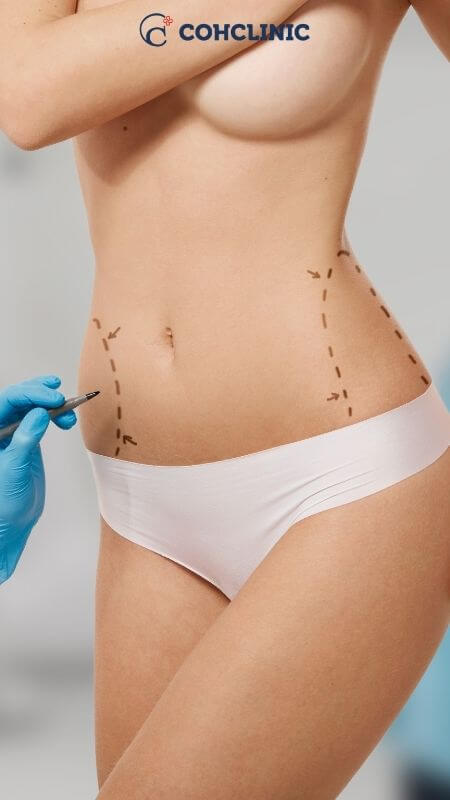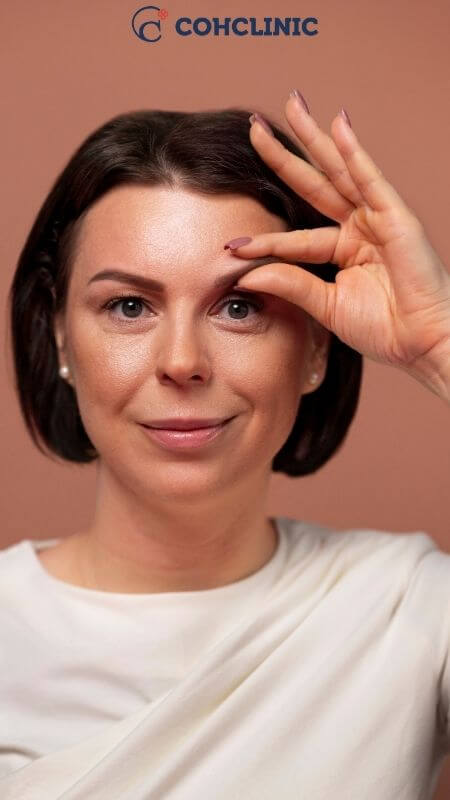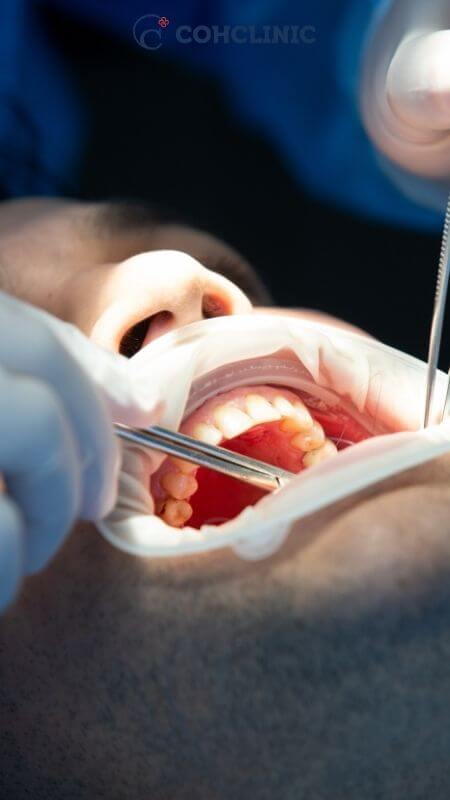Are you dissatisfied with the development of your beard? Is it uneven, inconsistent, or non-existent? If you want a longer beard, consider having a beard transplant performed by the professionals at COH Clinic.
Beard transplants are becoming increasingly popular as the craze for facial hair increases. Many men are dissatisfied with their beard development and are resorting to advanced hair transplant techniques to get a beard they can be proud of.
Whether you want a longer beard, a designer stubble style, or a goatee or mustache, COH Clinic professionals will walk you through the procedure during your appointment.
What is a beard transplant?
A beard transplant is a surgical operation in which hair follicles are transplanted from one portion of the body, often the scalp, to parts of the face where facial hair development is desired. The procedure allows men to achieve a fuller and more even beard by adding healthy hair follicles to areas with sparse or no hair growth.
Why get a beard transplant?
The increasing popularity of beard fashion makes having the beard of your dreams all the more possible. Better hair transplant procedures have never been more readily available. Beard is a sign of authority, and masculinity in many cultures. Having a long, dense beard may provide you the adaptability to alter your appearance while also boosting your self-esteem and confidence.

The goal of a facial hair transplant is to re-grow hair in parts of the face, such as the cheeks, goatee, mustache, and sideburns, that are lacking, uneven, or without hair altogether. When someone is unable to grow the amount of facial hair they want—for reasons related to genetics, lifestyle, or facial scars, for example—it offers a long-term alternative.
Beard transplants have changed substantially in recent years. Transplanted hair appears and feels natural, resulting in a thicker, denser beard that you can be proud of. But how exactly does a beard transplant work, and is it the best option for you?
Who is a good candidate for a beard transplant?
Men who have thin or patchy facial hair, or those who struggle with facial hair growth due to genetics, scarring, or other factors, can benefit from a beard transplant. Some men may have naturally thin facial hair, while others may have experienced hair loss in the beard area due to injury, burns, or previous surgeries. A beard transplant offers a natural and permanent solution to these issues.
How does a beard transplant work?
The following steps are commonly involved in the beard transplant process:
Consultation: The first step is to contact a certified and experienced hair transplant surgeon. The surgeon will examine the patient’s beard and discuss their objectives and expectations during this session.
Donor hair extraction: Hair follicles are often extracted from the back of the scalp, where hair development is prolific and comparable to facial hair in texture. The FUE (Follicular Unit Extraction) procedure is frequently used, which involves extracting individual hair follicles.
Transplantation: After harvesting the hair follicles, the surgeon delicately implants them into the desired places of the beard. They will take into account the patient’s desired beard shape and density to create a natural-looking result.
Recovery and growth: Following the surgery, the transplanted hair follicles will shed before new hair growth begins. It can take several months for the beard to fully grow out, and patients are advised to follow post-operative care instructions provided by their surgeon for optimal results.
Is a beard transplant a good idea?
- Natural looking beard
- Painless
- Allows various styles of the beard
- Safe surgical procedure
- Quick Healing
- Faster and permanent results
- Cost-effective
- Covers scars and burns
What are the risks of a beard transplant?
- The most typical adverse effects are swelling and redness. Following surgery, your face might swell.
- You could feel some strain on your skin or a minor numbness in your face. These side effects are unimportant because they will only last a short while after the operation.
- Another negative consequence that could occur is scarring. This negative effect, however, is not experienced if you select techniques like FUE.
Is a beard hair transplant procedure painful?
Many individuals are put off by the phrase “surgery,” and if you’re considering a facial hair transplant, you may be concerned about the pain or discomfort.
However, if you’re worried about a painful operation, you may take a deep breath and relax. Because the procedure is conducted under local anesthetic, a beard transplant is not painful.
Some patients may feel moderate discomfort or inflammation soon following the transplant, as well as some apparent redness for a few days. However, none of these issues are very severe or lasting, so there’s no need to worry about your hair transplant procedure.
How long does a beard implant take to heal?
The beard transplant recovery process takes 7 to 14 days. You can return to your regular activities after 14 days. You can begin to shave or trim your new beard after three weeks.
The new beard hairs may begin to shed after two to three weeks. After a transplant, hair will naturally shed, as is part of the process. When that occurs, fresh hair will begin to grow in its place. Your surgeon will advise you on several aftercare procedures, such as:
- Avoid touching your beard at all for the first five days after the procedure.
- The grafted beard area cannot be washed after the first day.
- For four weeks following the surgery, avoid swimming in a pool.
- For the first week, sleep flat on your back with your head up to reduce the chance of edema.
Do beard transplants last forever?
It provides a permanent treatment for persons who are unable to develop the required amount of facial hair owing to genetics, lifestyle, or facial scars. Transplanted hair looks and feels natural, resulting in a fuller, thicker beard you can be proud of.
How to choose the best clinic for a beard transplant?
For men who desire a fuller and more even beard, a beard transplant can provide an effective and permanent solution. By transplanting healthy hair follicles to areas with sparse facial hair growth, men can achieve the beard they’ve always wanted. If you’re considering a beard transplant, contact us at +90 (536) 934 6524, and we can help you achieve the beard look of your dreams.
Frequently Asked Questions
How long do beard implants last?
How long do beard implants last?
Approximately two weeks following the operation, the hairs will initially start to fall out. It is normal for there to be some shedding, which has little effect on long-term growth. Within a few months, the transplanted region of your beard will have significantly more new growth.
How risky is a beard transplant?
How risky is a beard transplant?
Even though major problems are uncommon, most operations entail the downside of potential infections, and beard transplants are no exception. The technique can also irritate and inflame your hair follicles, which in severe situations may call for medicine.
Can you shave after a beard transplant?
Can you shave after a beard transplant?
You can resume your regular activities when 14 days have passed. You may start shaving or trimming your brand-new beard after three weeks. The new beard hairs can start to come out and shed after two to three weeks. It's very common for hair to fall out following a transplant.
What is the best age for a beard transplant?
What is the best age for a beard transplant?
Getting a beard transplant when you're young won't do any harm. But if you're just a little bit more patient, as you get closer to the age of 30, your facial hair will probably develop on its own.
How painful is a beard transplant?
How painful is a beard transplant?
Because the bulk of our beard hair transplant treatments are performed as outpatient operations under local anesthesia, you won't experience any discomfort. Beard transplants are typically painless procedures, although you may experience some soreness or redness for a few days following the procedure.
Can we eat after a beard transplant?
Can we eat after a beard transplant?
A nutritious, well-balanced diet is critical for supporting healing and aiding your body's recovery after a beard transplant. Eat less spicy food since it may promote digestive system irritation and inflammation, which can be painful and may hinder the healing process.
Are 2000 grafts enough for a beard?
Are 2000 grafts enough for a beard?
The amount of donor grafts needed varies greatly from person to person. A full beard transplant may require 2,000 grafts. The number of grafts needed to provide fullness to areas with uneven thinning might range from 500 to 1,500. Around 750 to 1,200 hair grafts are commonly needed for goatee and mustache transplants.
Does a beard transplant leave scars?
Does a beard transplant leave scars?
It's common for mild redness and very small bleeding to happen after a beard transplant. Your skin will resume its regular appearance once you've cleaned it. Because it employs high-quality tools, this type of surgery doesn't leave any scars or other traces.
Are beard transplants safe?
Are beard transplants safe?
A beard transplant is a safe and painless procedure that takes two to five hours and seldom necessitates a return visit to the physician. Hair is transplanted from the patient's neck to the face throughout the surgery.







